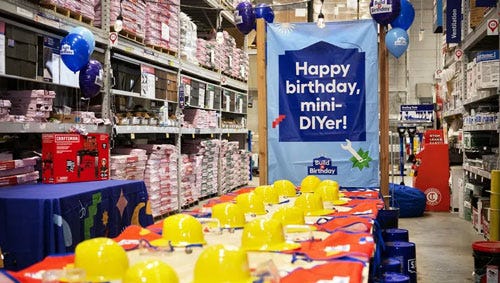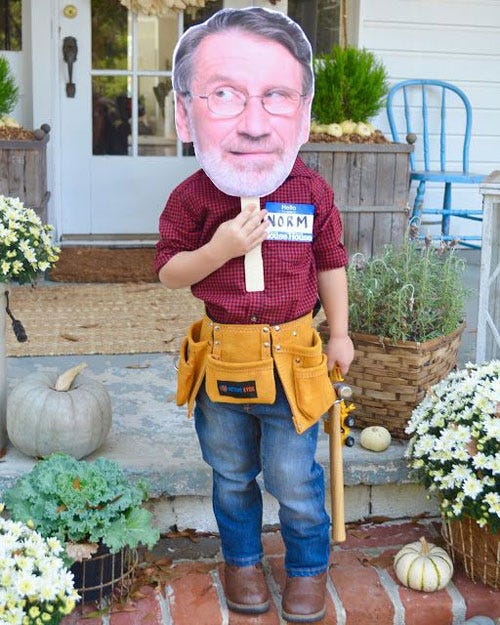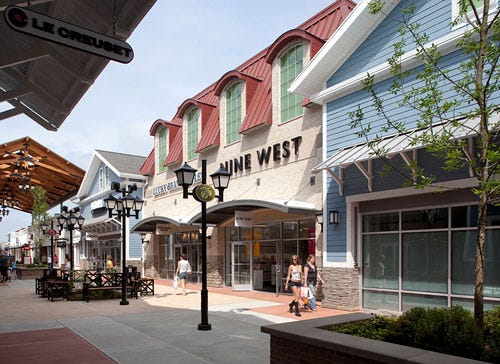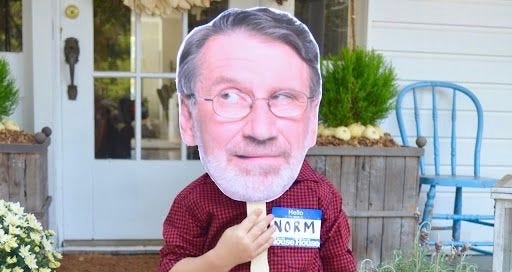Wednesday Walk: Big Box Party
Celebrating in the shingle aisle, faux Main Streets, and a long awaited snowfall
Welcome to Willoughby Hills!
In case you missed it, I rebranded Quarantine Creatives to provide a bigger umbrella for writing that is no longer just about the pandemic.
As is typical every Wednesday, today I’m bring you a smattering of topics that I hope will make you a bit more curious about the world around you and give you something to think about later.
If you like what you’re reading here, you can subscribe to have this newsletter delivered to your inbox twice a week:
Some Real Snow
Last week, I opened my Wednesday Walk with some musings about the mild winter we were having here in Massachusetts and how it might negatively affect my maple syrup harvest this year.
Well, as Mark Twain famously said: “If you don't like the weather in New England now, just wait a few minutes.”
This past weekend, we got close to six inches of snow, which is not a ton by usual standards but it feels like a lot for this winter. My yard is a beautiful blanket of sparkling white right now, although we have warmer weather again in the forecast so who knows how long it will last.
Tthe longer I stay in New England, the more I’m grateful for the snow when it happens, but also the spring when it comes, the hot summers, and the beautiful falls. The change of seasons helps me keep track of time and stay in touch with the world around me.
Big Box Birthday

You’ve probably gotten the impression from reading this newsletter that I am fascinated with how big box stores, malls, and Main Streets continue to evolve.
To that end, I’m sharing an interesting article from Kelly Hayes for Fox: big box home center Lowe’s will soon be offering in-store birthday parties. (Hat tip to Andrew Wagner for tweeting this article out).
According to Lowe’s, the party packs start at $349 and include the following:
The price is actually quite reasonable for what’s included. As somebody who has tried to save money on my kids’ birthdays by hosting them at our house, I know how quickly a bouncy house rental, an Elmo costume, and some refreshments can add up!
At the moment, the Lowe’s roll out is limited to 10 stores across the country, mostly in suburban/exurban locations, save for a location in Brooklyn (an interesting choice).
I find this whole idea fascinating for a number of reasons. On the one hand, I think it speaks to the popularity of the DIY movement across all age groups.
Jimmy DiResta’s new Netflix show Making Fun specifically targets younger audiences. (I’ve interviewed Jimmy twice on the podcast and covered his show last year in this newsletter).
One constant in my time at This Old House was an annual flood of emails and social media messages around Halloween time with little kids dressing up as Norm Abram or Tom Silva. Kids love building, and it seems to be more popular than ever.

Lowe’s opening up for birthday parties also could be indicative of the changing role of the big box store. At one time, retailers like Lowe’s and Home Depot were competing with local hardware stores or hardware departments at places like Sears. Their main advantage was size, which meant more variety and lower prices.
Amazon and other online retailers now have greater variety than the stores could ever offer, often at lower prices. Where does that leave Lowe’s and other physical shops?
My suspicion is that these parties may be an attempt to drive traffic to the stores while also trying to build some brand loyalty with kids and parents, although this concept has been around for some time. Both Lowe’s and Home Depot offer in-store clinics, including some aimed at kids.
The parties at Lowe’s are designed for children ages five and older. They go to great lengths to use the word “children” several times, but they also don’t seem to specify a maximum age. I would be curious if they will ever offer a version of these for adults, less as a DIY class and more as a social event.

“Main Street”
Sticking with the theme of the changing face of retail and Main Street, I came across an interesting Wal-Mart in my travels recently that I wanted to share. This particular store is located in a suburban neighborhood outside of Buffalo in Amherst, NY:
I was just driving past and didn’t have time to snap a photo, so this was the best that I could pull off of Google Street View. The entire “block” that you’re seeing in this image is a single Wal-Mart store, but instead of the usual monolithic facade, this one has been broken up to resemble several smaller buildings, almost like a small Main Street.
The “facades” vary in height and color, there are various awnings to suggest storefronts, and even faux windows to suggest apartments or office space on the second floor (a second floor which, as far as I can tell, does not exist).
I have never seen a Wal-Mart styled this way (if you’ve encountered one, let me know where in the comments). It was along a four-lane highway, surrounded by other big box stores, so I’m curious why it was designed in the way it does. Nothing else in the neighborhood resembles it either.
This design is a bit ironic because Wal-Mart has a well-documented history of intentionally pricing out local retailers to eliminate competition. There’s even a term called the “Wal-Mart Effect” which describes this phenomenon.
Co-opting the look of a small town Main Street for large scale retail is nothing new.
wrote this week in about how outlet malls have taken up urban symbolism to give the impression of Main Street in a suburban setting. In his piece, he compared the Liberty Village outlet mall in Flemington, NJ (considered one of the nation’s first outlet malls in the 1980s) with the Leesburg Premium Outlets in Virginia, which opened in the late 1990s.The latter borrows a lot of vernacular from Main Street, with wide sidewalks, a central “town square,” and even a playground for kids.
I mentioned to Addison on Twitter that we have an example of an even newer iteration near us. The Merrimack Premium Outlets, which opened in New Hampshire in 2012, take on a similar aesthetic to the Wal-Mart in Buffalo, with faux apartments above “discreet” storefronts (which are really part of one large building).

Merrimack and other outlet malls, which push parking to the perimeter and allow for a car-free pedestrian experience may offer a user experience closer to Main Street than Wal-Mart, but its interesting how they both suburban designs landed on the same aesthetic which evokes small towns of 100 years ago.
Perhaps it’s all just meaningless decoration, but Addison also thinks there may be a purpose to bringing these “new urbanist” principles to commercial areas:
“I do wonder how many people first experience this kind of thing in a commercial setting like this, rather than in a real city? And if these faux-urban shopping centers are doing their little part in driving home that land use and urban design matter?”
Let Me Know!
Thank you for reading! I always love hearing your thoughts, so please drop a line in the comments.
I publish new issues every Wednesday and Sunday. Sign up to always receive the latest issue and support my work:
Other Wednesday Walks
Please consider sharing this with a friend that you think might enjoy it or you can post it on social media.
If you’ve missed past issues of this newsletter, they are available to read here.
Stay Safe!
Heath








When I was living in Colorado for a few years, there were Walmarts built to look just like that. I thought it was very silly. It's incredible how much a facade changes the experience for consumers. Of course if you look overhead, it's the same old box they've been for years. It's all manipulating psychology.
As for Lowe's I think these diy class style birthday parties are an excellent idea. If kids are into diy projects now, this is a great way to encourage them. After all, the labor shortage in the construction and remodeling industry is at critical levels. Of course, Lowe's is doing this to groom new future customers, but I think it's going to do much more good than they realize.